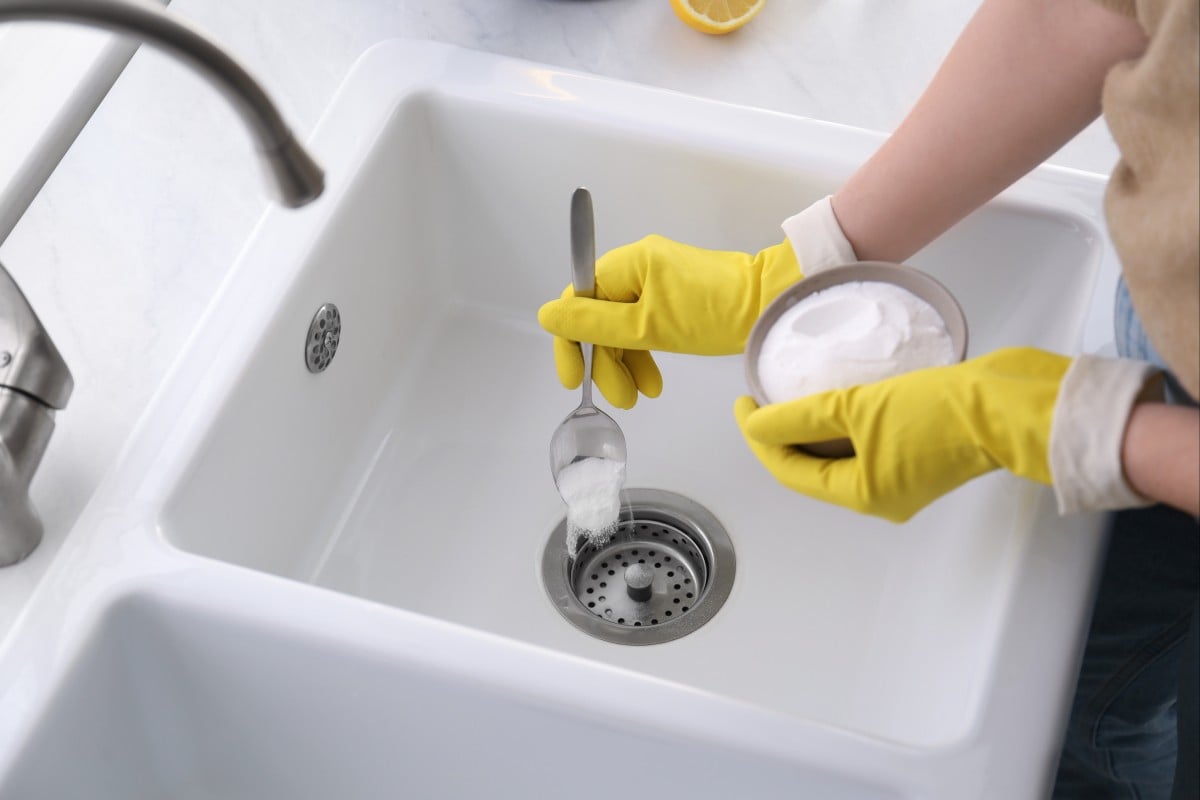
- Baking soda, also called sodium bicarbonate, is slightly alkaline – this is the reason why it has so many uses as a cleaning agent
- Young Post has partnered with Hong Kong Science Museum and Hong Kong Space Museum to answer your questions about the fantastic world around us
 Mixing baking soda with vinegar creates a chemical reaction that can clear your drains. Photo: Shutterstock
Mixing baking soda with vinegar creates a chemical reaction that can clear your drains. Photo: ShutterstockAfter cooking all day and enjoying a warm feast with friends or family, it’s inevitable that your kitchen will need cleaning. You might have stains on your stovetop or a sink drain clogged with food debris. But what if your bottles of cleaning solution are all empty?
Don’t panic! Your pantry may have a simple ingredient that can help you clean most things in a pinch.
From removing stains in your oven to unclogging drains and getting rid of unpleasant smells in your refrigerator, baking soda is an excellent cleaning agent with a wide range of uses.
How to get your glasses really clean
What is baking soda?
Its chemical name is sodium bicarbonate (NaHCO3). It exists in either a white crystalline or powdery solid form.
Baking soda can be obtained in a few different ways. It can be extracted from nahcolite, a natural mineral. It can be produced by refining soda ash, called sodium carbonate, from mined trona stones. It can also be manufactured by passing ammonia and carbon dioxide through a sodium chloride solution.
Crystals that remove stubborn stains
Baking soda is made of crystals that are sharp, hard and fine, so they are mildly abrasive.
When baking soda is mixed with water, the paste can easily remove dirt from an object. Some people even brush their teeth with toothpaste that contains baking soda.
To clean your home surfaces, spread a paste of baking soda and water, and let it sit for some time before scrubbing it away with a wet rag or sponge. But avoid using it on mirrors, windows and ceramic surfaces as the crystals could scratch the glass.
Keep it sweet at the gym with these clothes cleaning tips
Alkalinity is the key
Baking soda is slightly alkaline, which means its pH value is greater than seven. Its alkalinity is the main reason for its versatility as a cleaning agent.
Grease is composed of fatty acids, and when these come in contact with baking soda, a chemical reaction called saponification occurs (see graphic). This process makes baking soda great at washing away greasy stains.
Baking soda’s pH value also makes it an effective deodoriser. Some unpleasant smells on clothes or plastic containers are produced by acids, which are solutions with low pH levels. Baking soda can neutralise acids to remove bad smells. Some cat owners will even mix baking soda with litter to absorb the odour from their pet’s urine.
Mixing baking soda with vinegar creates another incredibly powerful cleaning agent that is perfect for unclogging drains. Baking soda is a basic solution as its pH value is nine. Vinegar, which has a pH value between two and three, is an acid.
Add baking soda into your drain, and then pour in vinegar. When these two substances are combined, the chemical reaction creates carbon dioxide and water. The carbon dioxide bubbles through the clog, breaking up the material. After about 10 minutes, add pressure by pouring boiling water to flush the drain.
There are many more uses for baking soda. Which other ones do you know of?
Content provided by
Young Post is pleased to partner with Hong Kong Science Museum and Hong Kong Space Museum on our STEM Lab series. Our aim is to encourage you in your pursuit of science. Every month, the two museums will answer your burning questions about the fantastic world around us, the cosmos and beyond.
